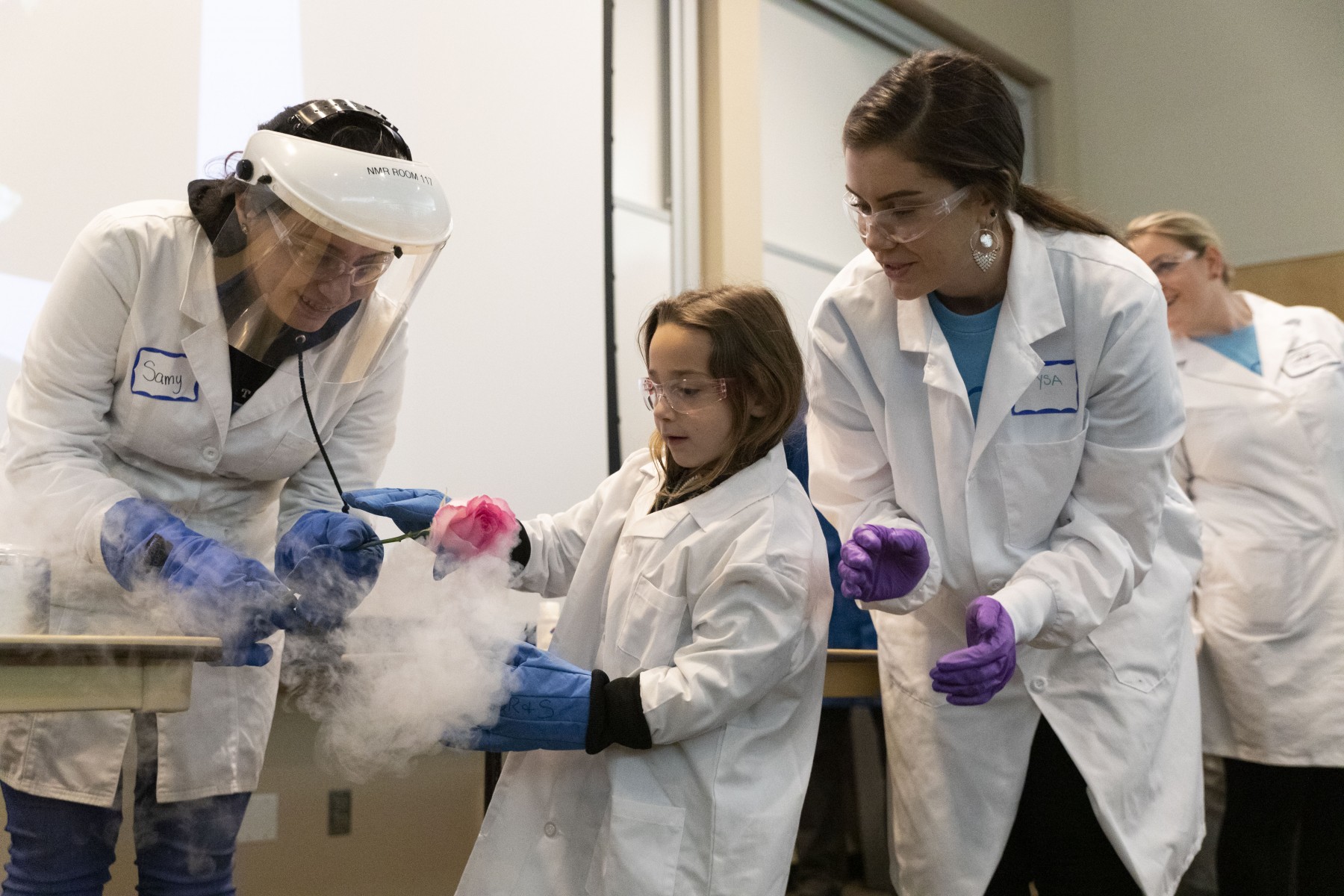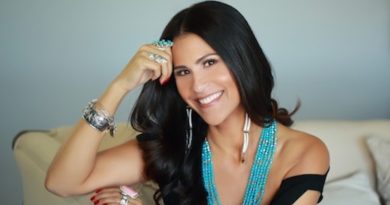Daily Business Report-March 6, 2020
Chemistry students assist a youth volunteer during the ‘Better Than Magic’ show at Super STEM Saturday last year. (Photo courtesy of Cal State San Marcos)
Super STEM Saturday returns to
Cal State San Marcos campus
Build and launch a rocket, view the surface of the sun, simulate a surgery with the da Vinci robot, or explore virtual reality.
These are just a few of the nearly 100 hands-on, interactive activities and demonstrations that will engage nearly 15,000 attendees on Saturday, March 14 at the annual science festival Super STEM Saturday.
Held from 10 a.m. to 4 p.m. at Cal State San Marcos, this rain-or-shine event is free and open to the public. Children of all ages are invited to attend. Super STEM Saturday closes the nine-day San Diego Festival of Science and Engineering, the largest celebration of innovation and science education in Southern California.
“Jean-Jacques Rousseau once shared, ‘We should not teach children the sciences, but give them a taste for them,’” said Cameron Curry, executive director for the Classical Academies. “I am so pleased that we provide the community of North County a day and festival focused on science, technology, engineering and math (STEM). The culmination of educators, organizations and professionals working together allows us to inspire minds, ignite passions, and expose students and our community to what is possible with STEM.”
Held in partnership by the Classical Academies and CSUSM, Super STEM Saturday has grown into a popular North County event that draws thousands of science enthusiasts each year to the university campus.
Coincidentally, this year Super STEM Saturday lands on Pi Day, an international celebration of the mathematical constant π (pi), which is 3.14 and therefore celebrated on 3/14. Guests can mark the special occasion with a slice of pie from San Marcos cafe and pie shop Mama Kat’s, available for purchase at the festival.
Event: Super STEM Saturday, a free interactive science festival for all ages
When: Saturday, March 14, 10 a.m. to 4 p.m.
Where: California State University San Marcos, 333 S. Twin Oaks Valley Road.
_____________________________
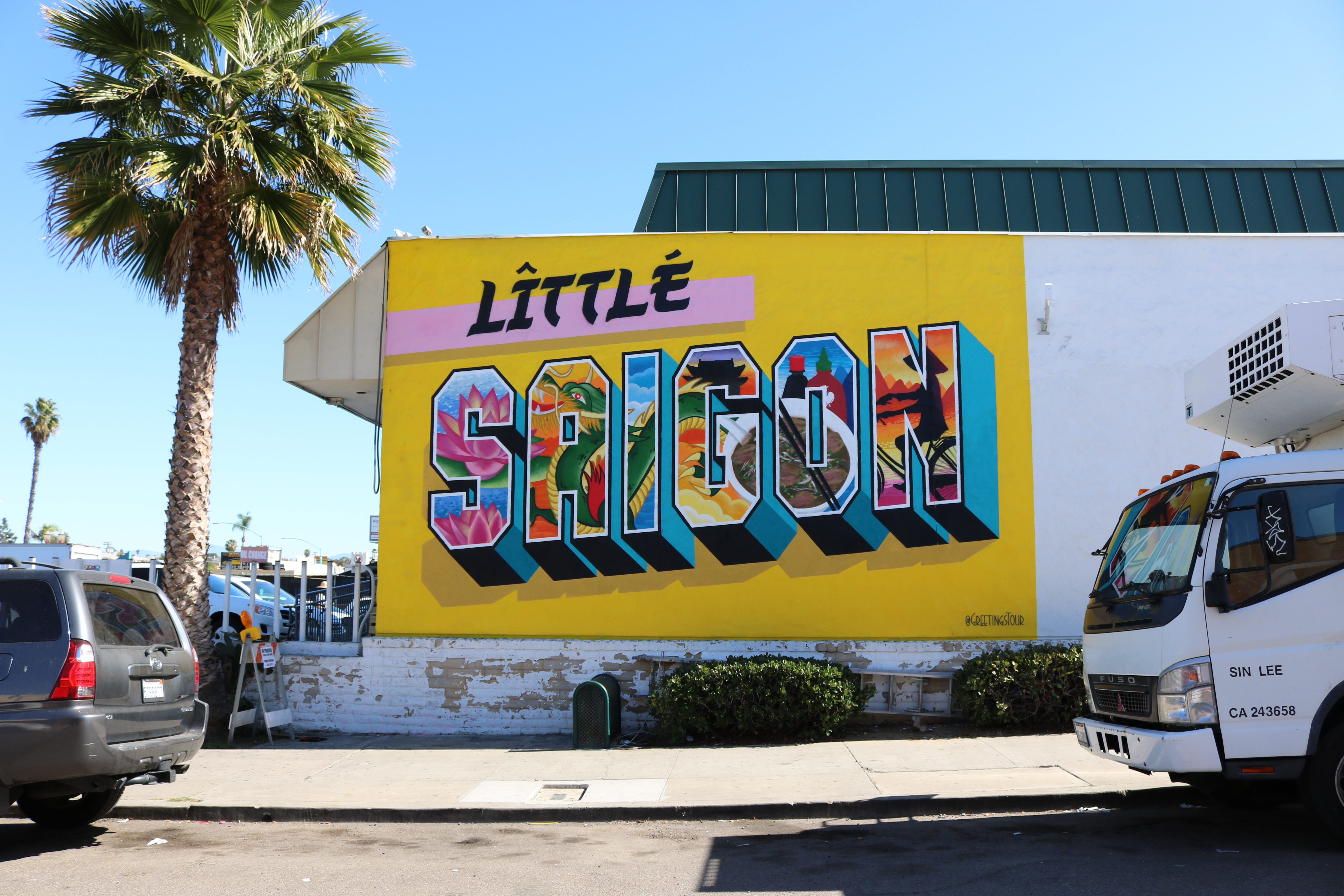
Friday tour to showcase transit-oriented
projects along mid-city corridor
The El Cajon Boulevard Business Improvement Association, in partnership with the Urban Land Institute (ULI) San Diego-Tijuana, will present the “Blvd. 20/20 Opportunity Tour 3.0” on Friday, March 6. The economic development tour will showcase a diverse mix of current projects and available parcels along the mid-city corridor now served by a dedicated Bus Rapid Transit lane from University Heights to North Park to City Heights.
MTS will provide transportation for the Tour, taking advantage of a new dedicated bus-only lane known as the Boulevard Busway. The pilot project, which runs 2.7 miles along a key stretch of the Boulevard, was unveiled last spring as a key component of the Boulevard BIA’s “Blvd. 20/20 Plan.” Currently running from Park Boulevard to Fairmount Avenue, the ultimate goal is to extend the bus-only lane along El Cajon Boulevard all the way to San Diego State University.
Tickets are required. Click here to purchase
_____________________________
A wearable device camoflages its
wearer no matter the weather
by Ioana Patringenaru |SDSU
Researchers at the University of California San Diego developed a wearable technology that can hide its wearer from heat-detecting sensors such as night vision goggles, even when the ambient temperature changes—a feat that current state of the art technology cannot match. The technology can adapt to temperature changes in just a few minutes, while keeping the wearer comfortable.
The device, which is at the proof-of-concept stage, has a surface that quickly cools down or heats up to match ambient temperatures, camouflaging the wearer’s body heat. The surface can go from 10 to 38 degrees Celsius (50 to 100.5 degrees Fahrenheit) in less than a minute. Meanwhile, the inside remains at the same temperature as human skin, making it comfortable for the wearer. The wireless device can be embedded into fabric, such as an armband. A more advanced version could be worn as a jacket.
_____________________________
Cubic awarded DISA contract with
potential value of $99.3 million
Cubic Corporation announced its Cubic Mission Solutions business division was awarded a contract by the Defense Information Systems Agency (DISA) to continue operating DISA’s Unified Video Dissemination System architecture and related services that meet Airborne, Intelligence, Surveillance and Reconnaissance Full Motion Video requirements.
The contract has a one-year base period followed by four single year options for a total potential value of $99.3 million, if all options are exercised. Work will be performed in Virginia, Maryland, Pennsylvania and locations overseas.
_____________________________
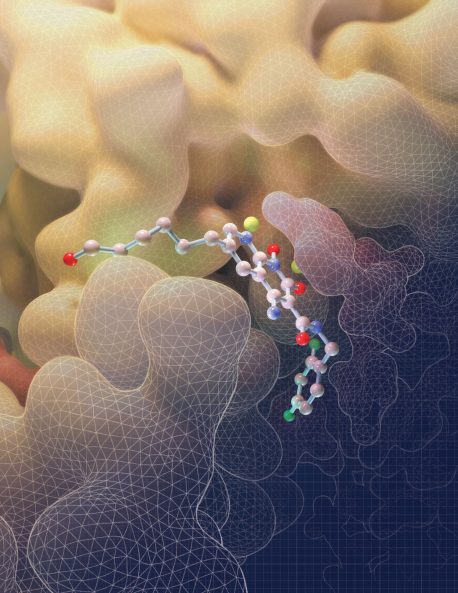
Click here for a high-resolution image.
Salk Institute findings could help
improve new treatments for HIV
Salk scientists have discovered how a powerful class of HIV drugs binds to a key piece of HIV machinery. By solving, for the first time, three-dimensional structures of this complex while different drugs were attached, the researchers showed what makes the therapy so potent. The work, which appeared in Science on January 30, 2020, provides insights that could help design or improve new treatments for HIV.
“The drugs we studied are the latest compounds available in the clinic today, as well as several important pre-clinical molecules. Until now, no one knew exactly how they bound to this HIV complex,” says the study’s senior author Dmitry Lyumkis, an assistant professor in Salk’s Laboratory of Genetics. “A better understanding of how the drugs work will help us improve them and design new therapeutic compounds.”
_____________________________
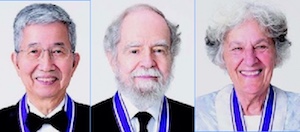
International leaders in technology, science
and arts to speak as part of Kyoto Symposium
UC San Diego will host international leaders in advanced technology, astrophysical sciences and theater March 18-19 as part of the annual Kyoto Prize Symposium. The event celebrates the recipients of Japan’s highest private award for global achievement, and will honor current Kyoto Laureates named in 2019: Ching W. Tang, advanced technology; James E. Gunn, basic sciences; and Ariane Mnouchkine, arts and philosophy.
Because Mnouchkine is not able to attend the event, Allan Havis, playwriting faculty member and chair of UC San Diego’s Department of Theatre and Dance, has been selected to lead a discussion March 19 on the performing arts in her absence.
Open to the public, the free talks provide an opportunity for campus community members and San Diego residents to learn about the achievements of the Kyoto Prize Laureates and their impact toward the betterment of mankind.
Ching W. Tang, Kyoto Prize Laureate in Advanced Technology
Tang is renowned for his pioneering work in developing organic light-emitting diodes (OLEDs) and their widespread application in displays, televisions and lighting.
James E. Gunn, Kyoto Prize Laureate in Basic Sciences
Gunn is Emeritus Eugene Higgins Professor of Astrophysical Sciences at Princeton University. He led the pioneering Sloan Digital Sky Survey (SDSS) from its hardware design phase, beginning in 1992.
Ariane Mnouchkine, Kyoto Prize Laureate in Arts and Philosophy
Mnouchkine is a founder and director of the Théâtre du Soleil in Paris. Since 1964, she has produced masterpieces with historical and political themes referring to traditional performances of both the East and the West.
For more details, click here.

